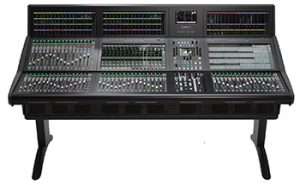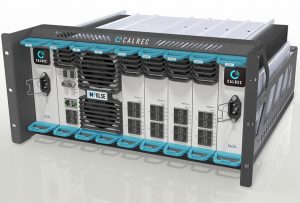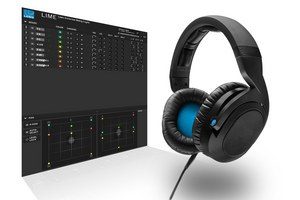Tech Focus: Immersive Sound, Part 2 — Consoles Are Transitioning to Next-Gen Tech
For now, upgrades are adapting standard 5.1-capable work surfaces for larger mix matrixes
Story Highlights
Broadcast-audio consoles are the foundational work surfaces for immersive sound on television; no one will be mixing 7.1.4 “in the box” anytime soon. The industry is in the midst of its transition to the immersive formats that will underpin next-generation audio, so what we’re seeing now are standard 5.1-capable consoles being adapted for larger mix matrixes via a combination of hardware and software upgrades. These adaptations are evolving along with the capture and mix techniques for immersive audio, so it’s a fluid landscape for the foreseeable future when it comes to consoles.
Here’s a look at three key examples.
SSL System T
Immersive-audio implementation for SSL’s System T places support for ATSC 3.0, Dolby Atmos, and MPEG-H at the heart of the console architecture. Three-axis coordinate panning for System T incorporates 2- or 4-channel overhead speakers into the available channel and bus formats. Besides positioning mono and stereo sources in a 3D sound field, System T can accept multichannel 3D sources and fine-tune their spatial components as they are added to the final production mix. This is essential in multilingual sports productions, where effects and ambience multichannel 3D beds will be used extensively as the basis of the individual program mixes.
Supported formats include 5.1.2, 5.1.4, 7.1.2, and 7.1.4 (with side channels as well as rear channels). A novel 4.0.4 format designed primarily for beds and stems ensures that the center channel remains available exclusively for dialogue and commentary. The 4.0.4 format is also ideal for the output of the new generation of VR mics that capture a 4-channel ambisonics scene representation. This can then be rendered in a multichannel format for incorporation into an object/bed-based immersive mix. Intelligent downmixing means that conventional 5.1, stereo, and mono mixes can be created simply by routing a 3D channel or stem to a suitably formatted master bus. Downmix coefficient control of the overhead (top) to floor (bottom) mix and the side channels to front and rear permits user adjustment of the system-derived defaults. See more here.
Calrec ImPulse
The next-generation audio-processing platform for Calrec’s Apollo and Artemis control surfaces, ImPulse provides a powerful audio-processing and -routing engine with AES67 and SMPTE 2110 connectivity. With control connectivity via IP, surfaces can be physically remote and connected over standard networks using COTS hardware. The technology enables all Calrec users to transition to next-generation audio (NGA) and IP infrastructures without an overhaul of production equipment. ImPulse provides 3D immersive path widths and panning for NGA applications and 5.1, 5.1.2, 5.1.4, 7.1, 7.1.2, and 7.1.4 input channels; busses, monitoring, and metering are available. It has an integrated AoIP router, which fully supports NMOS discovery and connection management, as well as mDNS/RAVENNA discovery. Two 5RU ImPulse cores can be combined to provide full redundancy and can be physically remote from each other for disaster recovery. See more here.
Lawo Immersive Mixing Engine
The Lawo Immersive Mixing Engine (LIME) provides integrated control with Lawo’s mc² series consoles and is capable of producing all relevant 3D/immersive audio mixes used by formats like Dolby Atmos (7.1.2 and 5.1.4 bed), MPEG-H, AURO-3D, DTS:X, NHK 22.2, IMAX 6.0 and 12.0, and Sennheiser AMBEO 3D audio for loudspeaker systems. Furthermore, it is ready for MPEG-H’s TV Audio System, included in ATSC 3.0, designed for personal-audio and broadcast applications. In addition, LIME includes a dedicated headphone monitoring solution for 3D and surround productions, featuring New Audio Technology’s binaural speaker-virtualization Headphone Surround 3D. See more here.
Click here for Tech Focus: Immersive Sound, Part 1 — The Technology Is Increasingly Integrated Into Broadcast Sports.
Click here for Tech Focus: Immersive Sound, Part 3 — Multichannel Mics Find a Place in Sports Broadcasts



